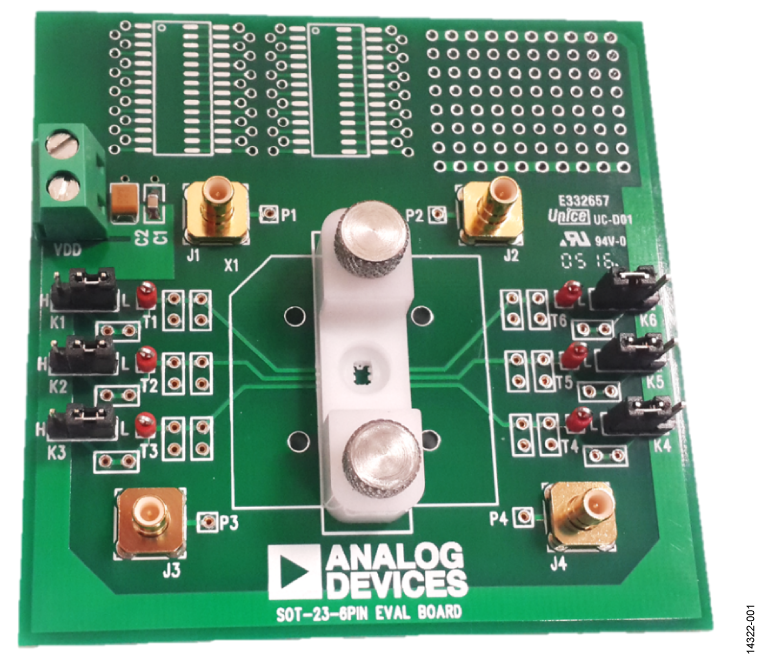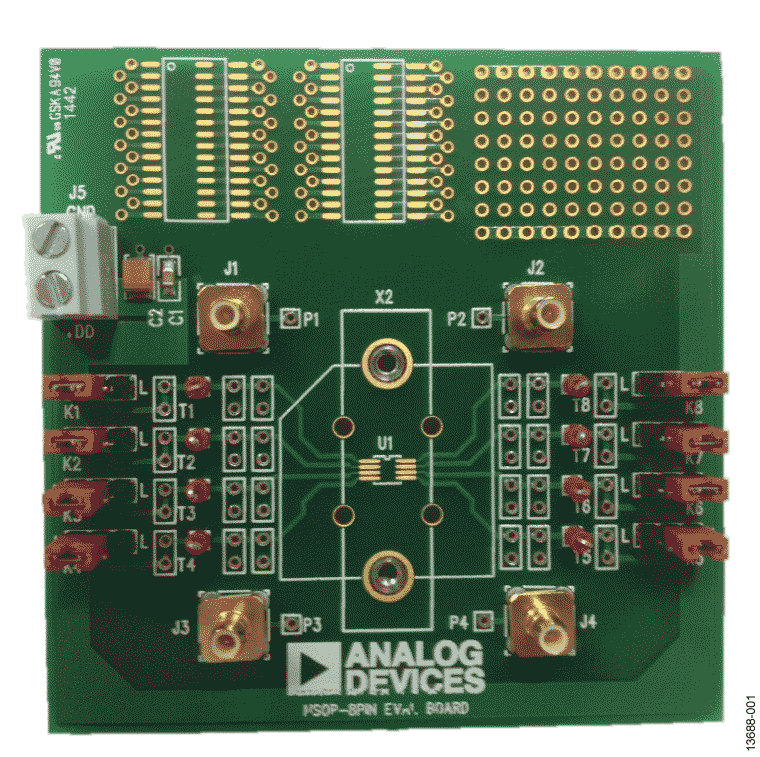The ADG465 is a single channel protector that comes in SOT-23
and MSOP packages. The channel protector is in series with the
signal path and protects sensitive components from voltage
transience in the signal path whether or not the power supplies
are present. Because the channel protection works regardless of
the presence of the supplies, the channel protectors are ideal for
use in applications where correct power sequencing cannot
always be guaranteed to protect the analog inputs (for example, hot
insertion rack systems).
A channel protector consists of an N channel, metal-oxide
semiconductor field-effect transistor (MOSFET), a P channel
MOSFET, and another N channel MOSFET connected in series.
The channel protector behaves like a series resistor during normal
operation, that is, (VSS + 1.5 V) < VIN < (VDD − 1.5 V). When the
analog input of a channel exceeds the power supplies (including
VDD and VSS = 0 V), one of the MOSFETs switches off, clamping
the output to either VSS + 1.5 V or VDD − 1.5 V. Circuitry and
signal source protection are provided in the event of an overvoltage
or power loss. The channel protectors can withstand overvoltage
inputs from −40 V to +40 V.
The ADG465 can operate from both bipolar and unipolar supplies.
The channels are normally on when power is connected, and
open circuit when power is disconnected. With power supplies of
±15 V, the on resistance of the ADG465 is 80 Ω typical, with a
leakage current of ±1 nA maximum. When power is disconnected,
the input leakage current is approximately ±0.005 μA typical.
The ADG465 is available in a 6-lead SOT-23 package, and an
8-lead MSOP package.
Product Highlights
- Fault Protection.
The ADG465 can withstand continuous voltage inputs from
−40 V to +40 V. When a fault occurs due to the power supplies
being turned off, or due to an overvoltage being applied to
the ADG465, the output is clamped. When power is turned
off, current is limited to the nanoampere level.
- Low Power Dissipation.
- Low RON 80 Ω typical.
- Trench Isolation Latch-Up Proof Construction.
A dielectric trench separates the P channel and the
N channel MOSFETs thereby preventing latch up.
Applications
- ATE Equipment
- Sensitive measurement equipment
- Hot insertion rack systems
- ADC input channel protection



